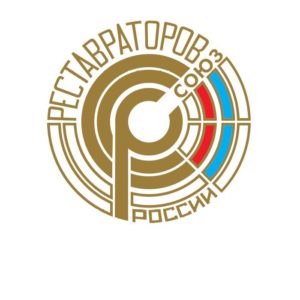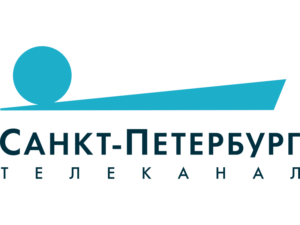St. Petersburg celebrates Domenico Trezzini's 350th anniversary in 2020. Lev Lurie, historian, journalist & writer, the Golden Trezzini Awards Jury member since 2018, discovers the story of the first architect of the city, specially for the Awards.

In the late 17th century, Italy had long ceased to be the most economically prominent part of Europe. Minor Italian states were getting poorer, which meant fewer and fewer orders for artists, sculptors, and architects. At the same time, the school founded in Alberti and Leonardo’s times was still in place.

Roman bridge in the canton of Ticino, Switzerland. Source: Wikipedia
Italian masters were appreciated in the richest European states – England, France, and Holland. For professionals from Northern Italy, Lombardia, and the near Southern Switzerland architectural work became kind of seasonal.
In his famous Pushkin speech, Fedor Dostoevsky named the key feature of Russian people – “global outgoingness,” implying their skill to adopt from foreigners the best methods and appropriate them. Italy was one of the most important sources for Russian art here. In the 15th to 17th centuries Russian architecture was majorly influenced by Solari and Fiorovanti’s works in the Moscow Kremlin.
The impact Domenico Trezzini, a native of the Swiss canton of Ticino, provided on the new Russian architecture was comparable to that. We need to mention here that he was the first from a large group of Italian and Swiss architects in Russia, including Luigi Fontana, Domenico Gilardi, Luigi Rusca, Giovanni Lucini, the Bruni Family, and George Gsell. Alexander Benois, who in the early 20th century resided in Lugano, wrote, “If you take a pair of compasses, put its needle point on Lugano, and encircle a lake region of 8 to 10 kilometers, this circle would cover several settlements that have fostered a great number of architects, decorative sculptors and painters, creditable for creation and decoration of the most remarkable landmarks throughout Europe (but for England) in the past five to six centuries.”

Layout of St. Petersburg by J. Homann. Paper, etching, graver, watercolors. 1720s (till 1725). Source: Wikipedia
Apparently, Domenico Trezzini started his career under the auspices of his fellow countryman, a fortifier Domenico Pelli, well-known in Europe. The latter had been trained by a famous Vauban, an outstanding military engineer, a marshal of France. Vauban had created a fortification system that remained till the Battle of Port Arthur. Starting with the late 17th century, the fortification system he had introduced gradually took over the entire Europe. During the arms race that had embraced the continent in response to the War of Spanish Succession and the Great Northern War, every country sought to rebuild their fortresses in accordance with the system of Vauban’s.
Christian V of Denmark was also getting ready for a war with Sweden, and a group of Swiss experts, headed by Pelli, was invited to rebuilt the Kronborg Stronghold in Elsinore. However, the war didn’t last long for the Danes – it took less than half a year. In August 1700, they capitulated, leaving the Swiss idle.
On April 1, 1703, Andrey Izmailov, the Russian Ambassador in Copenhagen, lured Domenico Trezzini into the Russian service by sending him the following letter: “I hereby offer Mr. Tretzin, an Italy-born master of architectonics, currently in service of the Caesar of Denmark, a salary of 20 chervonets per month for his creative work and perfect art if he moves to Moscow to serve in the state and private construction. Moreover, after he clearly demonstrates his art, his salary is to be increased. In addition to that, I announce that the afore-said Mr. Tretzin is free to go wherever he wants if he ever wants to resign or bethinks that local air is bad for his health.” Trezzini was also promised some travelling allowance and sickness benefit.
A salary of 1,000 rubles Russians offered to Trezzini was an unimaginable amount for a little-known Swiss-born Italian. At that time, Peter the Great spent as little as 366 rubles a year on himself.
On July 27, 1703, Trezzini with ten professionals hired in Denmark arrived to Arkhangelsk by sea. It took another month to travel to Moscow, and finally on August 22, 1703, he was officially hired. In February 1704, Trezzini was sent north to build a fortress, as this was his specialty.

“Original” wooden church named after apostles Peter and Paul, founded on June 29, 1703, in the center of the fortress. On the right, spires of the Trinity Church at the Gorodskoy (Petrogradsky) Isle are visible. Engraving from the book by Andrey Bogdanov “Description of St. Petersburg before its establishment…”
To build the city that before long would become the capital of the Russian Empire, Peter the Great had engaged some outstanding architects who unlike Trezzini had got a name in the West. A famous Roman architect Nicola Michetti, who built the Grand Cascade in Peterhof, managed to stay in Russia for five years. Andreas Schluter, Chief Architect of the King of Prussia, built the Summer Palace in St. Petersburg, but a year later died, unable to cope with the local climate. The story of Jean-Baptiste Le Blond, a foremost French architect and master of landscaping, was even a more tragic one. He was building the Grand Peterhof Palace and the Monplaisir Palace in Peterhof, but died of humiliation after Peter the Great insulted and caned him. He managed to work in St. Petersburg for three years. Trezzini’s fellow countryman Luigi Fontana spent in St. Petersburg about two years – he designed the Menshikov Palace.
Domenico Trezzini, who before coming to Russia had no solo projects, somehow managed to survive in the severe continental climate against the urges of his rather bizarre customer, start a second family, survive three rulers (Peter I, Catherine I, and Peter II – Trezzini died during Anna I’s reign in 1734). But the most important thing was that having replaced his renowned competitors, Domenico Trezzini became the most well-known Russian architect of the early 18th century. This Italian must have had something that caused deep sympathy in Peter the Great, as the latter even godfathered Trezzini’s children. That was quite indicative of the Emperor’s religious tolerance, as Trezzini was a catholic.

Twelve Collegia Building (engraving, 1753). Source: Wikipedia
The native of Astano managed to get Peter the Great’s town-planning idea right. St. Petersburg is a work of the Russian spirit as great as the symbol of statehood, the victory over Napoleon, Gagarin’s flight to space, and the Red Banner atop the Reichstag. This city was built not for some regular residents – this was a symbol of the new empire coming into existence in Europe. In a floodable subarctic tundra with neither roads nor any building materials nearby they had to set up the New Amsterdam – with huge squares and straight avenues, as well as stone and brick homes built along the single façade line.

Development plan for the Spit of the Vasilievsky Island, 1723. Copy of the 1722’s plan by the author. Architect D. Trezzini. Central State Archive of Old Acts, f. 9, op. 1, gr. II, d., b. 61, p. 468.
When Anna I came to the throne, most of Trezzini’s projects had been finished, and St. Petersburg had looked quite well-rounded, both Russians and guests from abroad saw it as a true miracle. I dare say, a Bedouin feels like that when he sees the towers of Abu Dhabi at the edge of the desert. After a long trip across the Baltic, the Neva Bay informally known as the Marquis’s Puddle, the Malaya Neva, and then, all of a sudden, they got sight of the vast panorama of Neva, the St. Peter and Paul Cathedral, the Winter Palace, the Admiralty, and all the palazzos on both sides of the wide river. It were Trezzini’s works that have always ensured St. Petersburg’s aesthetical effect.
Most of researchers believe that Trezzini’s architecture originated from the art of building typical in the Northern Europe, first of all, the Baltic and the Netherlands, and Northern Italy, too. According to Italian surveyors, Trezzini found special inspiration in architectural marvels of Verona. Boris Kirikov names the Church of the Gesu in Rome among other prototypes of the St. Peter and Paul Cathedral. The St. Peter Gate is believed to originate from the San Zeno Portal in Verona and the City Gate of Haarlem. The Peter and Paul Fortress is often compared with the Dutch Naarden, the first St. Peter and Paul Church (which wasn’t a cathedral at first) – with a Protestant church in the Dutch Oudtshoorn, and the famous angel weather vane on the spire is believed to be an exact copy of the vane atop the Maastricht clock tower. Moreover, the St. Peter and Paul Cathedral features the influence of the homonymous church in Riga.
The so-called Petrine Baroque is a unique combination invented by Domenico Trezzini, and strictly speaking, it can’t be found anywhere beyond St. Petersburg – fine “Dutch-like” window glazing, rustics, embossed linings, two-colored walls, plain pillars designed to replace potent Borromini’s Baroque columns, gambrel roofs, and all the spires. A great connoisseur of architecture Alexander Benois together with an outstanding architect Alexander Dmitriev kind-heartedly mocked Trezzini’s architecture, having designed the Peter the Great City College. Known today as the Nakhimov Naval School, it features all the elements of Trezzini’s bright style.
The amount of works completed by Domenico Trezzini is quite impressive: the Alexander Nevsky Monastery, the Summer and the Winter Palaces, the St. Peter and Paul Fortress and Cathedral, the Galernaya Harbor, the Kronschlot Fortress, the Myt (Toll) Yard, and the Twelve Collegia Building. For his merits, Trezzini was awarded with a title of nobility, became a fortification colonel, and a landlord at the Petersburg Province. At the state expense, Catherine I sent his son Peter, the godchild of Peter the Great, to take a training course in Italy. Two major Russian architects of Elizabeth’s times, Ivan Korobov and Mikhail Zemtsov, were Trezzini’s apprentices. He died on February 19, 1734, 33 years after moving from Moscow to St. Petersburg. He was buried at a Catholic cemetery of the Samson Cathedral, but the grave hasn’t survived till nowadays.

Peter and Paul Cathedral. Drawing by D. Trezzini, 1710s. Copy by A. Korenev, 1767.
What a miraculous fate – a young man of no repute became the chief architect of the capital of the Russian Empire, and determined its architectural appearance for many years to come. Hundreds of guides repeat his name every day in dozens of languages. In 2014, a 5-meters’ high Trezzini memorial was installed at the Blagovestchensky (Annunciation) Bridge in the Vasilievsky Island by Pavel Ignatiev, one of the best St. Petersburg’s sculptors. The memorial is located not far from the house that is believed to have been the Trezzini residence once. The famous native of Ticino stands out in the St. Petersburg frost in his luxurious fur-coat, exploring the city of his own design.
Lev Lurie, specially for the Golden Trezzini Awards
Entries for the Thirds International Golden Trezzini Awards for Architecture and design can be submitted at www.goldtrezzini.ru till October 15, 2020. Participation in the Awards is free of charge.
The General Partner of the Golden Trezzini Awards is the State Museum of St. Petersburg History. The System Partner is RBI Group. Partner of a Special nomination is YIT. The Official Awarding Partner is LenRusStroy Building Corporation. To see a full list of the Awards partners, please, check: https://goldtrezzini.ru/en/partners-of-the-golden-trezzini-awards-2020/.
Official partners
Media partners



















































